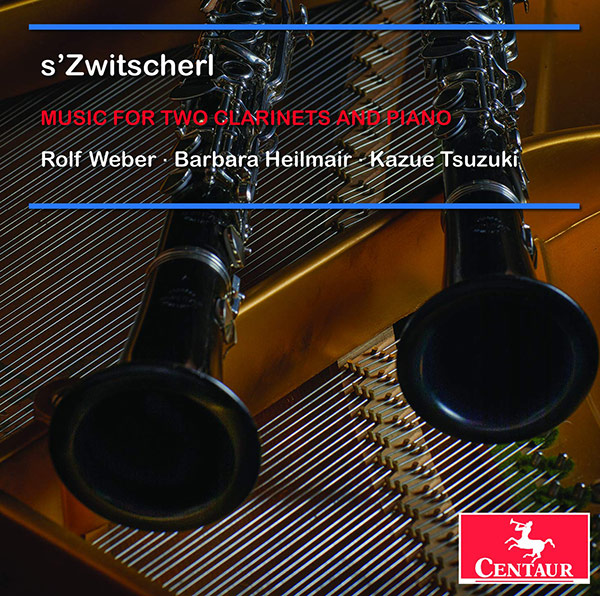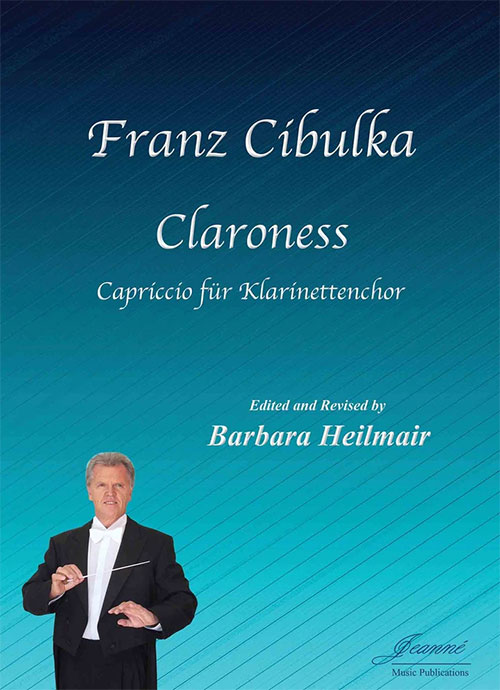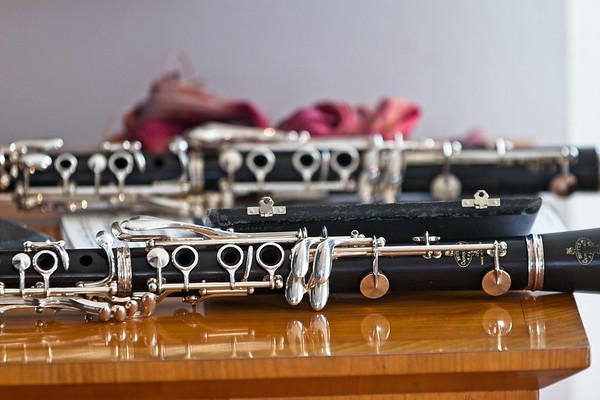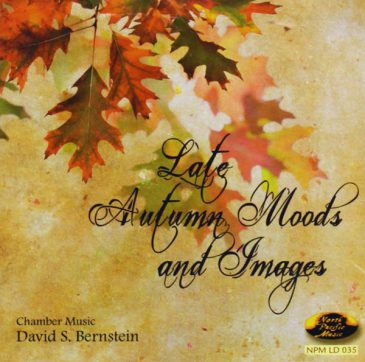Publications and Recordings - Clarinet
Please find below some samples of my recordings and publications around performing and teaching the clarinet.
For a full list of publications, please contact me for my CV.

CD "s'Zwitscherl - Music for Two Clarinets and Piano"
“…luscious warmth generated by Barbara Heilmair’s bass clarinet beautifully complemented by Kazue Tsuzuki’s rich harmonies at the piano and Rolf Weber’s stunning lines in the high register.”
— Patreon, Dimitri Ashkenazy
“Weber, Heilmair, and Tsuzuki are to be commended for their work on this album. They have brought attention to some lesser-known works, and Cibulka’s crazy-bird madcap is particularly relatable in 2020.”
— NACWPI Journal, Winter 2020, Eric Schultz
You can purchase the album here
“This album gives performers and pedagogues alike a new awareness of a wide array of lesser-known choices. The polished presentation, balanced roles featuring virtuosic playing from every member of the trio, and a clear dedication to collaborative playing in matching sound, balance, and interpretation, make this album a worthwhile investment.”
— College Music Symposium, November ’21, Lauren Jacobson

s’Zwitscherl fuer Zwei
Franz Cibulka had written a first version of “s’Zwitscherl”, scored for one clarinet and piano. In 2015, Franz Cibulka arranged the piece for two clarinets and piano for Rolf Weber, Barbara Heilmair, and Kazue Tsuzuki, on the occasion of their collaboration at the Portland State Clarinet Symposium.
The new edition for two clarinets and piano is a revised and edited version, based on the score that Cibulka had sent to Barbara Heilmair.

The new edition of Claroness combines Franz Cibulka’s 2012 Valencia Version and 2015 Madrid Version scores. This updated edition is the result of a close musical collaboration between Barbara Heilmair and Cibulka, following the premiere of the Madrid Version at the 2015 ICA ClarinetFest by the Austrian Clarinet Choir. The aim of this edition was to create a final version of the work that stays as true as possible to the original music, while making it clearer and more accessible for ensemble directors, music educators, and clarinet players.

Review of Nicole Buetti’s “Clarinet Masquerade Waltz” for Clarinet Choir
Originally published in The Clarinet 51/2 (March 2024).


Originally published in The Clarinet 48/2 (March 2021).
"The Clarinet" Article “Collaboration With Boehm And Oehler Clarinets”
The clarinet, like several other wind instruments, has two primary forms. Both the Boehm (“French”) and Oehler (“German”) clarinets are recognized as being equipped to play music at the highest level of performance standards, and outstanding artists around the world play them. In many music festivals and higher education institutions that have an international reach, both systems are present. However, combining Oehler and Boehm systems in professional ensembles is still an exception. There has been some controversy involving concepts of tradition, national schools of playing, aesthetics, geographically and culturally formed musical tastes, acoustical phenomena, and career considerations. The article is sharing insights from Barbara Heilmair’s collaboration and recording project with Oehler and Boehm clarinets and discussions of the two clarinet systems and their history.
ClarinetFest® 2021 Virtual Presentation: "Clarinet Choirs – Fostering an Idiomatic Blend of Large Ensemble and Chamber Music Skills"
Clarinet Choir playing and directing entails a special blend of skills from both large ensemble music and chamber music. The lecture is infused with music and score examples that illustrate this approach which is aimed at fully bringing out the unique sound and instrumentation of a clarinet choir.
The lecture is suitable for audiences of all levels.

"Six Sound Sculptures For Clarinet and Piano" by David Bernstein on the CD "Late Autmn Moods and Images"
Heilmair’s tone is writ large as well as whisper gentle, illuminating both the music and her experienced control over degrees of dynamic flux that give the instrument a wide-ranging capacity for colorful narrative.
— Performing Arts Review, Daniel Kepl
Interview with Composer David S. Bernstein: Late Autumn Moods & Images — Performing Arts Review